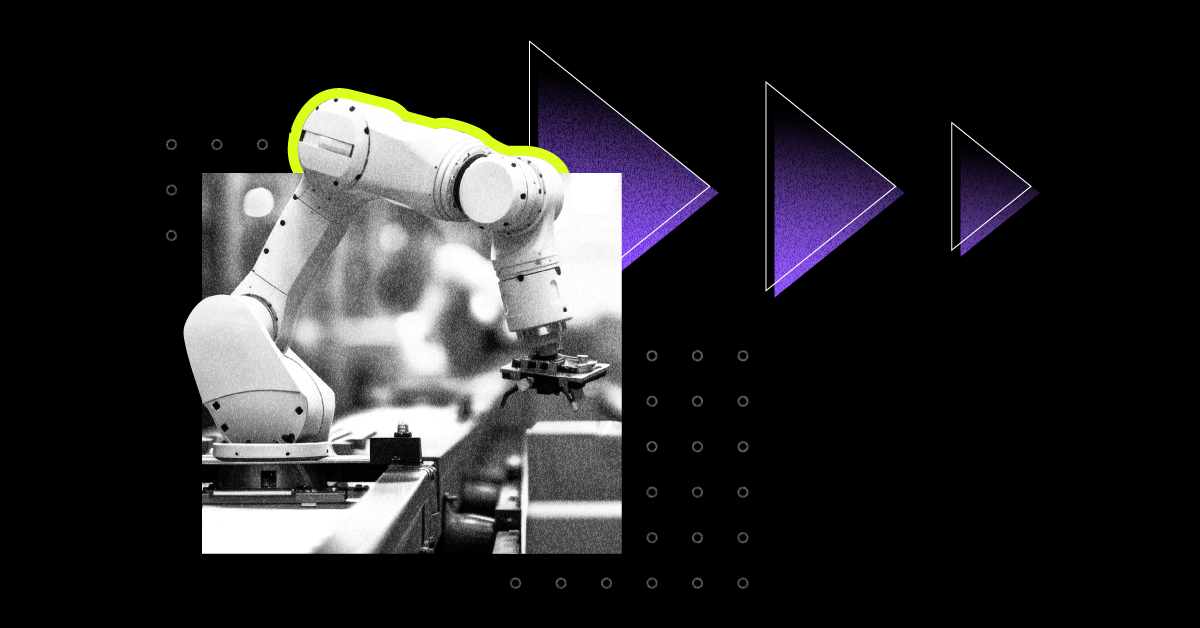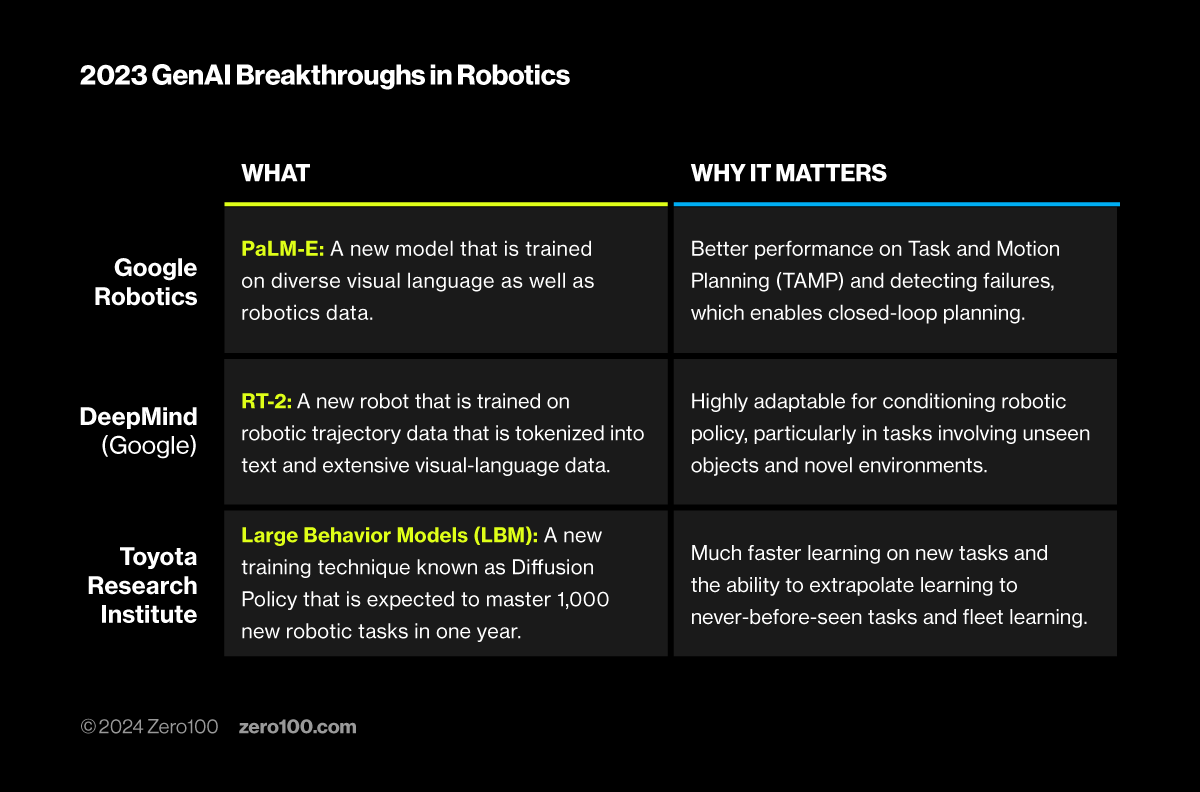
Cracking Robotic Investment with GenAI
Yesterday’s robots were purpose-built for narrow applications. But with genAI, tomorrow’s robots could be trained overnight on hundreds of tasks. Unlocking that value and ROI, though, won't come with investing in robots one at a time. This revolution requires systems thinking.
Stanford’s Human-Centered Artificial Intelligence (HAI) just released its 2024 AI Index and it’s good news for robot lovers. The report matters because progress on AI is so fast and diffused that supply chain leaders looking for practical use cases have a hard time placing big bets. This is especially true for robotics investment, where traditional ROI thinking focused on task-level headcount reductions is too small and slow to unlock much of anything.
Recent progress in applying genAI techniques (PaLM-E, RT-2, and LBMs) to train robots signals a wave of innovation that could radically improve make-move automation in factories, warehouses, and field service. But it can’t be had by investing in robots one at a time.

Big Payback Takes System-Level Thinking
Amazon’s fulfillment center operations have over 750,000 robots in a massive, interconnected network of buildings, machines, and vehicles. Its robotics strategy, however, has never been about saving money. The purpose is to deliver on customer promises made on its e-commerce site.
Total revenue has grown nearly ten-fold since Amazon acquired Kiva Systems in 2012, largely because the intent of the automation investment was speed and scale enablement, not job elimination. It has worked because Amazon thinks at a systems level, and then works backwards to build the capabilities needed to reach a specific goal.
Toyota has also invested billions in robotics using a systems-thinking approach that isn’t about eliminating labor but instead improving quality, safety, and flexibility in auto assembly. Its applications of robotics and AI include not only classical quality inspection, AGVs for moving parts around, and automated welding operations but also human work analytics meant to identify dangerous or stressful process steps.
The human-centric heritage of the Toyota Production Method may inspire its approach to robotics, which is less about replacing people than it is about complementing them. Russ Tedrake of the Toyota Research Institute (TRI) says, “We believe robots should amplify people.”
TRI has developed a genAI breakthrough called Diffusion Policy based on Large Behavior Models (LBM), which are the robot equivalent of Large Language Models for chatbots. The engineering benefit is much faster training and greater dexterity. At a system level, the win is more agile production for the world’s second-largest automaker.
Enter the Humanoids
GenAI innovation in robotics includes improving both their logical reasoning capabilities (ie, choose the largest box first) and their physical manipulation capabilities (ie, flip the pancake). By combining these vectors of research (along with power systems, haptic sensors, machine vision, and material science), researchers are getting close to delivering humanoid robots that can be used in nearly all jobs currently held by people.
One appeal of humanoid robots is that they require less redesign of work process and infrastructure. Automakers, who have long led in robotics and run big, capital-intensive plants that are notoriously labor dependent, are among the earliest adopters. BMW, Mercedes Benz, and Magna Steyr have all begun to experiment. Logistics providers, including DHL, GXO Logistics, and Amazon, are also testing humanoid robots for similar reasons.
Fast food, meanwhile, struggles with rising costs as consumers begin to complain about high prices. Chains like White Castle, McDonald’s, and Costa Coffee have begun to experiment with automation. True humanoid robots capable of doing the work at a reasonable cost, however, are still a way off.
Data and the GenAI Unlock for Robotics
Traditional manufacturing and logistics robots were purpose-built for narrow applications. Coding and setup have been a barrier, with engineers balancing upfront cost and time against longer-term productivity gains based mostly on labor savings. Big automakers like GM and Volkswagen could justify robotics investments with this model but few others could.
GenAI changes everything. Pioneers, including Google, who developed PaLM-E and RT-2, as well as TRI, whose Diffusion Policy technique with LBMs is training robots overnight on hundreds of high-dexterity tasks, have shown that the same technology powering ChatGPT can be used to crack the upfront time and cost problem dogging robotics’ adoption.
Human work captured by cameras, plus traditional automation work recorded in sensor-based machine data, bridged with data from humanoid robots could provide an amazing training set for genAI applications. Wider adoption and improving ROI are the flywheel that’s just starting to spin.
Systems thinking is the key.